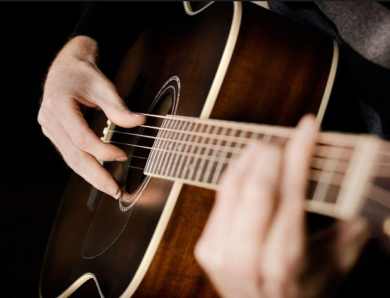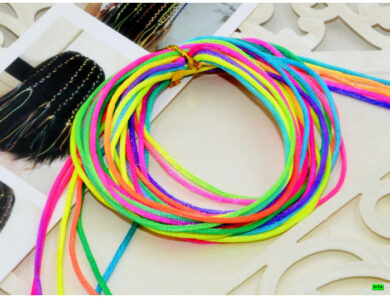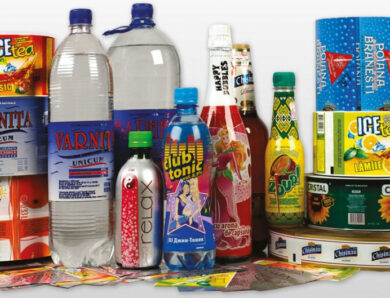Thermite mixture as a modern and classic inflammatory substance
In the process of combustion, inflammatory substances initially cause high temperatures, and then an intense flame, which leads to the ignition of various substances and objects. The combustion temperature is usually 1000oC and more. The inflammatory composition provides slow and even burning, thanks to which the flame remains stable for a long time and can cover a fairly large space.
Based on the methods of manufacture and components, inflammatory substances are divided into several types, each of which has certain properties, which determine the possibility of combat use in different ways.
According to the physical state, inflammatory substances occur:
- solid;
- sparsely viscous;
- rare.
In some special cases, several types of mixtures are used simultaneously, which enhances the inflammatory effect of ammunition.
The composition of the current flamethrower mixtures is quite diverse, as it depends not only on certain tactical and technical objectives, but also from climatic conditions. So, formulations of incendiary mixtures differ in composition, and the ratio of components.
Classic combat inflammatory substances
In ancient times, inflammatory substances were made on the basis of natural resins, to continue to successfully use them in battle. Then other flammable substances replaced such devices, created by gunpowder. Such incendiary mixtures were in great demand in China and were used as flamethrowers. Later, oil was widely used in military affairs, as well as products of processing of this substance and bitumen. Only two hundred years ago, powder mixtures began to be used for inflammatory purposes.
In the First World War, sodium metal was used as a flamethrower mixture, which prevented extinguishing fires with water, combustible oils with the addition of rosin, paraffin or emulsified soap, as well as termites. Yellow phosphorus and paraffin mixtures were sometimes used, oil with nitrates, perchlorate, chlorates and nitrocellulose. In scattering bombs used a mixture of paraffin with red phosphorus or tow, impregnated with oil. A self-igniting solution of yellow phosphorus in mineral oil was also considered a universal invention.
Modern incendiary weapons
According to the current classification, modern incendiary mixtures are divided into several main groups:
-
termite or inflammatory termite compounds (include aluminum powder and iron scale);
- metallized incendiary mixtures based on petroleum products, also called pyrogels;
- conventional incendiary mixtures based on petroleum products are also called napalms.
A separate group of incendiary warheads is self-igniting in the air or just a smoke-forming substance, created on the basis of ordinary or plasticized phosphorus.
There are special requirements for the use of flammable liquids for flamethrowers. Example:
- the tool must work flawlessly;
- the mixture should burn in the open air rather weakly, that the ultimate goal is reached by a large number of it;
- the liquid must have the highest specific weight for the normal flight of its scab, otherwise spraying may occur in front of the flamethrower mouthpiece.
In different countries, flamethrowers are produced with different compositions based on the quantity and quality of materials available for armament in the region.. One of the most common mixtures for flamethrowing is a set of light and heavy kerosene fractions, a mixture of light and resin oils with wood alcohol, aldehydes, ether and acetone. Coal tar and viscose oil are also often used for similar purposes (severe), to which add one of the more flammable liquids such as benzene.
Termite mixtures. General Information
Inflammatory substance based on termites (the word comes from the Greek. "heat", "heat") is a mechanical mixture of aluminum granules or powder (25%) and iron oxide (75%). By its structure, color and texture of termite briquette is similar to gray cast iron. In such a termite mixture, the combustion temperature is very high. Moreover, it burns in the absence of air, because of oxygen, contained in the components of the substance, enough to burn without a flame.
To enhance the effect of inflammatory substances of this kind, it is often mixed with sodium, phosphorus and napalm mixtures. In this case, the molten termite can easily burn like a duralumin sheet, and a fairly large sheet of steel. At this temperature, reaching 3500 GHS, cracking brick and concrete and brick, burning steel and iron.
But the addition of such substances, as sodium nitrate, bor, barium, sulfur and polyester resins can achieve a different result - the combustion temperature is reduced, while the thermal effect and the size of the flame increase.
Termite composition is widely used in incendiary bombs, made with a special shell, containing a magnesium alloy. During combustion, molten flammable slag is formed, igniting the same alloy in the bomb shell. Such shells were widely used in World War II, however, experts believe, that incendiary bombs have not lost their importance even in the modern world.
In the American army for equipment of such ammunition the termite structure of TN2 and TNZ is used, which were developed in the prewar period, as well as a more modern composition of TH4 along with other mixtures, containing in addition to termites, various powdered substances (example, aluminum and magnesium, lead peroxide and sulfur, barium nitrate, etc.). Such additives simplify the process of igniting termites, increase the size of the flame and enhance the inflammatory properties of the mixture.
According to military sources, inflammatory effect can also be enhanced by the simultaneous use of a termite mixture with napalm, sodium and phosphorus. Ammunition, equipped with an incendiary mixture based on termite, have a narrow inflammatory effect, due to which the scattering of body fragments becomes insignificant.
Dry sand is considered to be the best way to extinguish termites. In this case, such ammunition in any case can not be extinguished with water, as this threatens the formation of explosive gas.
Combat use of termites
During the First World War, ammunition based on a termite mixture was used for the first time. It was an ordinary hand grenade or unitary and scattering artillery shell. Initially, the artillery shell was unitary, that is, converted after use into boiling hot metal and slag, because the ignition of the termite and its combustion took place directly in the projectile.
Later they began to use an artillery shell with the contents, scattering for a specific purpose. He worked on the principle of the usual shrapnel, however, steel balls were replaced by termite-pressed segmental and spherical elements. At the end or on the surface of each element was placed flammable from powder gas igniter, as a result, hot thermite pieces went to the target on a conical trajectory, causing many fires.
Barrel artillerymen gradually abandoned incendiary ammunition based on termites in favor of cluster shells and white phosphorus, and small-caliber termites were used only by German soldiers as equipment for combat missile units. The Americans later returned to the use of 20-mm incendiary projectiles in aircraft guns in Vietnam. Such weapons of the US Army proved to be quite effective in shelling unarmored and lightly armored vehicles, as well as in places of accumulation of wooden buildings and forests.
In addition to iron scale and shavings or powder of aluminum, each combat termite contains additives, which facilitate ignition and increase the volume of the flame. Barium nitrate is used as an additive in the US Army, which provides additional oxygen to the combustion zone, thereby increasing the flame, as well as bakelite (wood flour, mixed with phenol-formaldehyde resin), employee for connection of all components and increase of moisture resistance of structure.
Sulfur is often added to the above components, bor, potassium perchlorate, lead peroxide, aluminum-magnesium alloy, PVC and other similar substances. The flash point of thermite incendiary mixtures with this composition reaches 1300oC, and the combustion temperature is 3500oC. In addition, the ammunition provides a high charge density, which allows you to destroy the stone, melt concrete and burn steel.
When adding to the inflammatory mixture of nitrate and other components, containing oxygen, can be achieved on the surface of the checker melt boiling. This will not only create a three-dimensional flame, but will also cause the formation of sparks with increased activity, which will fly in different directions from the burning element, while sparks will have a striking effect.
For additional efficiency of ammunition-equipped ammunition, their housings are made of a special alloy "electron", famous for its extremely low density, which led to its widespread use in aircraft construction. This alloy consists of magnesium, aluminum and manganese, which increases corrosion resistance. It is also characterized by high manufacturability (easily ignited, burns intensely) and is quite inexpensive.
Tracing compositions for shells and bullets are also made on the basis of thermite mixtures, as well as the content of small-caliber armor-piercing and incendiary tracer ammunition.
Conclusion
Termite was most widely used during World War II for the manufacture and use of ammunition by saboteurs. Small incendiary charges were disguised as various small tools such as a wrench or hammer, which brought a lot of problems to counterintelligence around the world. Saboteurs also practiced combining different munitions with termite bullets, the use of which was particularly effective in ammunition depots, airfields and near railways.
Nowadays, termites are used exclusively for peaceful purposes due to the progressive development of more efficient and modern incendiary mixtures based on various pyrogels., thermobaric mixtures and white phosphorus.




